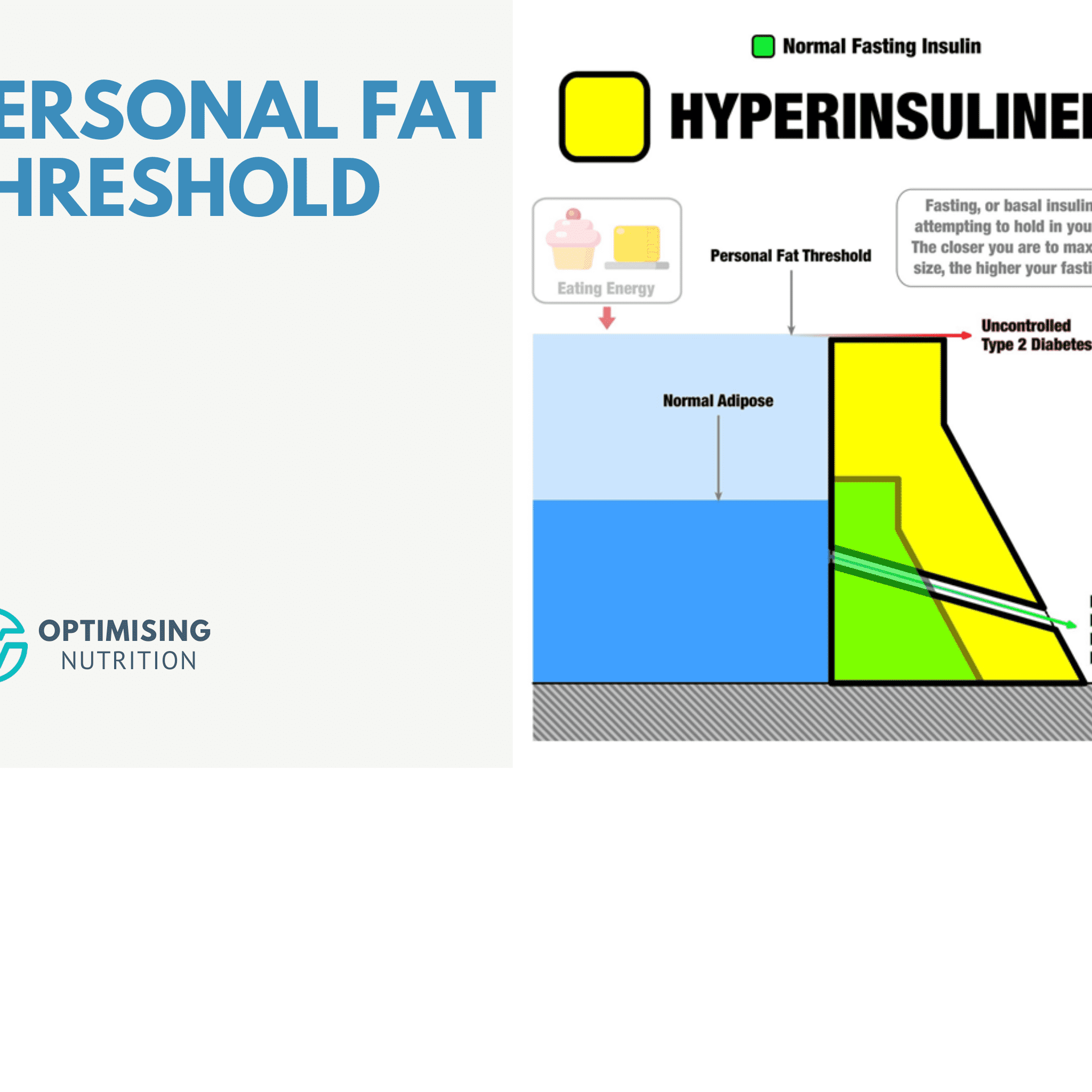We’ve often discussed the obesity paradox on the forum and I recently read about the idea of a Personal Fat Threshold that explains quite a bit about why some people can be ‘overweight/obese’ and be metabolically healthy and others can be in the ‘normal BMI’ range and be metabolically unhealthy. The key seems to be figuring out how much body fat our own (unique) body will tolerate before things like glucose and lipids start spilling over into the our blood steam because we’ve run out of storage capacity in our fat cells and other organs. We have a lot of great suggestions for these situations here on the forum already of course but I’m always on the lookout for lifestyle changes people can make without resorting to supplements or meds.
Here is a great quote from an article (recommend reading the whole thing) I ran across recently followed by a link to a 2014 scientific abstract questioning the carb/insulin hypothesis and introducing the Personal Fat Threshold Theory.
“The bottom line is that insulin resistance, type 2 diabetes, and metabolic syndrome are not simply a result of eating too many carbs.
Instead, it’s a bit more complex (but still simple) than that, and there are a few more things to factor into the cause and the plan of action.
But if insulin and carbs aren’t to blame for our obesity and diabetes, what can we do? Is it back to just eating less and exercising more?
Well, sort of. But not exactly.
The key to the whole puzzle comes down to lowering Your Personal Fat Threshold.
What Is My Personal Fat Threshold?
By now, you’re probably wondering how you can calculate Your Personal Fat Threshold so you can restrict your calories, lose just the right amount of weight, and kick your metabolic syndrome.
While body weight and other biometrics can be easy to calculate, calculating your personal fat threshold is not simple.
First, to determine if you are above your personal fat threshold, you check your waking glucose. If it’s over 100 mg/dL or 5.6 mmol/L, then you’re above your personal fat threshold.
You can use a simple blood glucose monitor (or a continuous glucose monitor if you already have one) as a fuel gauge to determine whether or not you need to eat and refuel again.
Over time, as you unload the extra energy you have onboard, your waking glucose and insulin sensitivity will improve.”

 optimisingnutrition.com
optimisingnutrition.com
Normal weight individuals who develop type 2 diabetes: the personal fat threshold - PubMed
(If anyone has access to it in full please share).
Here is a great quote from an article (recommend reading the whole thing) I ran across recently followed by a link to a 2014 scientific abstract questioning the carb/insulin hypothesis and introducing the Personal Fat Threshold Theory.
“The bottom line is that insulin resistance, type 2 diabetes, and metabolic syndrome are not simply a result of eating too many carbs.
Instead, it’s a bit more complex (but still simple) than that, and there are a few more things to factor into the cause and the plan of action.
But if insulin and carbs aren’t to blame for our obesity and diabetes, what can we do? Is it back to just eating less and exercising more?
Well, sort of. But not exactly.
The key to the whole puzzle comes down to lowering Your Personal Fat Threshold.
What Is My Personal Fat Threshold?
By now, you’re probably wondering how you can calculate Your Personal Fat Threshold so you can restrict your calories, lose just the right amount of weight, and kick your metabolic syndrome.
While body weight and other biometrics can be easy to calculate, calculating your personal fat threshold is not simple.
First, to determine if you are above your personal fat threshold, you check your waking glucose. If it’s over 100 mg/dL or 5.6 mmol/L, then you’re above your personal fat threshold.
You can use a simple blood glucose monitor (or a continuous glucose monitor if you already have one) as a fuel gauge to determine whether or not you need to eat and refuel again.
Over time, as you unload the extra energy you have onboard, your waking glucose and insulin sensitivity will improve.”

The Personal Fat Threshold Model of Insulin Resistance, Diabetes & Obesity
Carbs trigger the release of insulin, which makes you fat. Right? No. Not exactly. After some fascinating discussion in a private chat group that we’re both in, Dr Ted Naiman created his ‘insulinographic’ to elucidate the personal fat threshold and the adipose-centric theory of diabesity...
 optimisingnutrition.com
optimisingnutrition.com
Normal weight individuals who develop type 2 diabetes: the personal fat threshold - PubMed
(If anyone has access to it in full please share).


